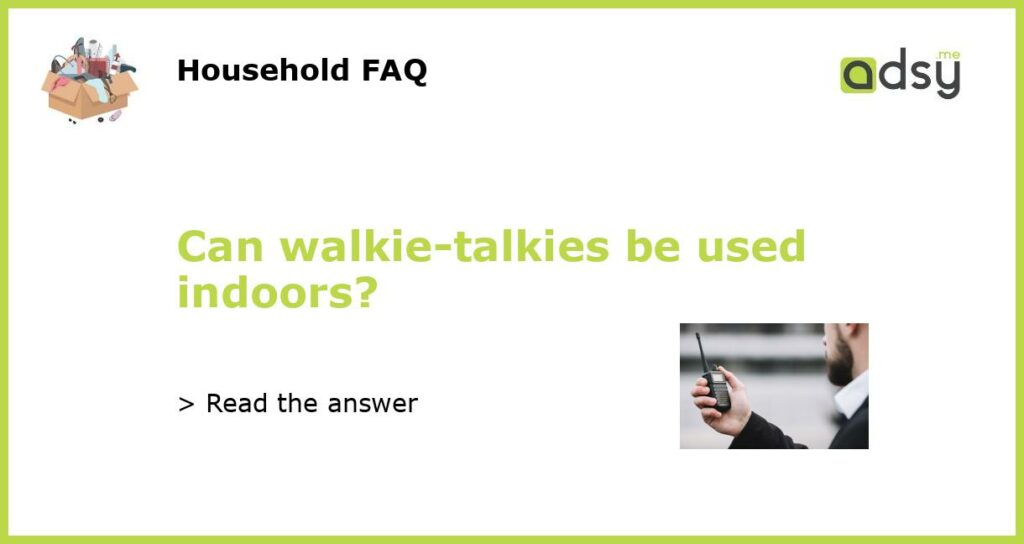Can walkie-talkies be used indoors?
Yes, walkie-talkies can be used indoors
Walkie-talkies are not limited to outdoor use only. While they are commonly used in situations where communication over long distances is required, such as in outdoor activities or during emergencies, they can also be used effectively indoors. The range of walkie-talkies varies depending on the model and technology used, but many models have a range of up to several miles, making them suitable for indoor communication as well.
Benefits of using walkie-talkies indoors
Using walkie-talkies indoors can offer several benefits.
Firstly, they provide instant and real-time communication without the need for a phone or internet connection. This can be particularly useful in environments where mobile signals may be weak or unavailable, such as in basements or large buildings with thick walls.
Additionally, walkie-talkies are often more reliable than cell phones in terms of signal strength and battery life, as they are specifically designed for communication purposes. Walkie-talkies can also provide better coverage in areas with poor or no cell phone reception.
Furthermore, walkie-talkies can be used by multiple users at the same time, allowing for group communication in various settings. This can be especially valuable in situations where coordination and collaboration are essential, such as in large warehouses or event venues.
Ideal indoor environments for walkie-talkie use
While walkie-talkies can be used effectively in various indoor settings, some environments are particularly suitable for their use.
One example is retail stores, where employees can use walkie-talkies to communicate with each other and coordinate tasks efficiently. This can help ensure smooth operations, especially during busy times when immediate communication is crucial.
Another ideal environment for walkie-talkie use is large office buildings. In such settings, walkie-talkies can enable quick and efficient communication between different floors or departments, eliminating the need for intercom systems or constant phone calls.
Additionally, walkie-talkies can be advantageous in healthcare settings, such as hospitals or nursing homes, where immediate communication between staff members is vital for patient care and safety.
Tips for using walkie-talkies effectively indoors
While walkie-talkies can be used indoors, there are some tips to ensure optimal performance and communication.
Firstly, it is important to choose walkie-talkies that operate on frequencies suitable for indoor use. Some frequencies may be more prone to interference from other electronic devices, which can affect the range and clarity of communication.
Secondly, consider the layout and structure of the indoor space. Thick walls, metal structures, or other physical barriers may limit the range of the walkie-talkies. It may be necessary to test the range and performance of the devices in different areas of the space to determine the best communication range.
Lastly, familiarize yourself with the features and settings of the walkie-talkies. Understanding how to adjust volume levels, use different channels or frequencies, and activate additional features, such as voice activation or noise cancellation, can enhance the communication experience indoors.
Alternative solutions for indoor communication
While walkie-talkies can be an effective solution for indoor communication, there are alternative options available as well.
Intercom systems, for example, provide a dedicated and centralized communication solution specifically designed for indoor use. They can be installed in homes, offices, or other buildings, allowing for instant and direct communication between different rooms or areas.
Another alternative is the use of mobile apps or software-based solutions that enable voice communication over a local network or the internet. These solutions can be particularly useful for organizations or individuals who prefer to use their existing smartphones or devices for indoor communication.
Ultimately, the choice of communication solution for indoor use depends on the specific needs and preferences of the users.






